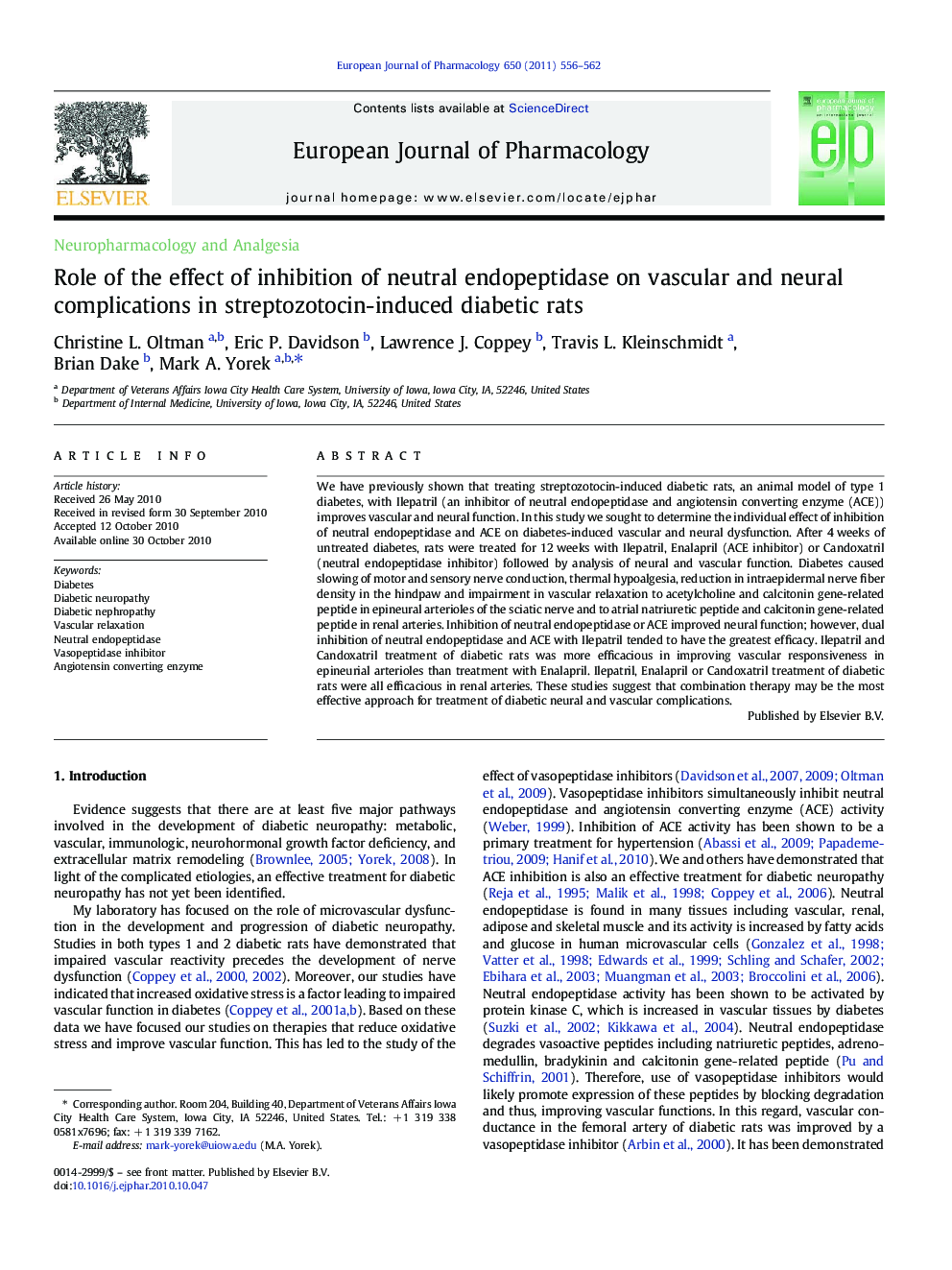| Article ID | Journal | Published Year | Pages | File Type |
|---|---|---|---|---|
| 2533028 | European Journal of Pharmacology | 2011 | 7 Pages |
We have previously shown that treating streptozotocin-induced diabetic rats, an animal model of type 1 diabetes, with Ilepatril (an inhibitor of neutral endopeptidase and angiotensin converting enzyme (ACE)) improves vascular and neural function. In this study we sought to determine the individual effect of inhibition of neutral endopeptidase and ACE on diabetes-induced vascular and neural dysfunction. After 4 weeks of untreated diabetes, rats were treated for 12 weeks with Ilepatril, Enalapril (ACE inhibitor) or Candoxatril (neutral endopeptidase inhibitor) followed by analysis of neural and vascular function. Diabetes caused slowing of motor and sensory nerve conduction, thermal hypoalgesia, reduction in intraepidermal nerve fiber density in the hindpaw and impairment in vascular relaxation to acetylcholine and calcitonin gene-related peptide in epineural arterioles of the sciatic nerve and to atrial natriuretic peptide and calcitonin gene-related peptide in renal arteries. Inhibition of neutral endopeptidase or ACE improved neural function; however, dual inhibition of neutral endopeptidase and ACE with Ilepatril tended to have the greatest efficacy. Ilepatril and Candoxatril treatment of diabetic rats was more efficacious in improving vascular responsiveness in epineurial arterioles than treatment with Enalapril. Ilepatril, Enalapril or Candoxatril treatment of diabetic rats were all efficacious in renal arteries. These studies suggest that combination therapy may be the most effective approach for treatment of diabetic neural and vascular complications.
